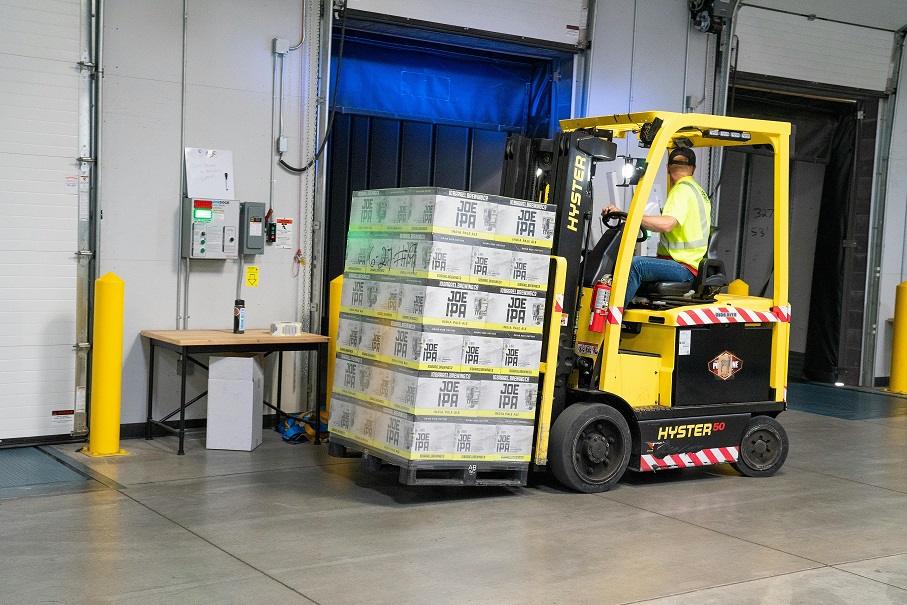Forklifts are essential tools in many industries, from warehousing and manufacturing to construction and logistics. One of the most critical components of a forklift is the mast, which directly influences the machine’s lifting height, maneuverability, and suitability for specific tasks. Choosing the right mast type can make a significant difference in operational efficiency and safety. In this blog, we’ll explore the different forklift mast types, how they work, their advantages, and the best applications for each.
Understanding the Forklift Mast
Before diving into the various forklift mast types, it’s important to understand what a mast does. The mast is the vertical assembly that raises and lowers loads. It consists of interlocking rails that provide lateral stability and allow the forklift’s forks to move up and down. The number of stages in a mast determines how high the forks can go and how compact the mast remains when retracted.
There are four main forklift mast types: Single Stage, Two Stage (Duplex), Three Stage (Triplex), and Four Stage (Quad). Each has distinct features that suit different operational needs.
1. Single Stage Mast (Simplex)
Overview
The single stage mast, also known as a simplex mast, consists of a single channel with a limited lifting range. It has no free lift, meaning that the forks begin to rise as soon as the mast does, which can be a limitation in certain environments.
Key Features
- Basic construction
- No free lift
- Minimal lift height
- Simple and cost-effective
Best Uses
- Outdoor environments
- Jobs where overhead clearance isn’t restricted
- Low height stacking and loading
Pros
- Low maintenance
- Sturdy design
- Ideal for simple, open-space lifting tasks
Cons
- Not suitable for confined spaces or low ceilings
- Limited lifting height
2. Two Stage Mast (Duplex)
Overview
The two stage mast, or duplex mast, features two sets of rails and includes a free lift cylinder in the center. This configuration allows the forks to rise without immediately raising the outer mast, making it suitable for environments with height restrictions.
Key Features
- Moderate lift height
- Partial free lift capability
- More versatile than a simplex mast
Best Uses
- Indoor warehouses
- Loading/unloading in trailers
- Work in facilities with low overhead clearance
Pros
- Enhanced flexibility
- Suitable for varied lifting operations
- Good balance between height and retraction
Cons
- More complex than a simplex mast
- Slightly higher cost and maintenance
3. Three Stage Mast (Triplex)
Overview
The three stage mast is the most common type used in forklifts, especially in warehouse settings. It has three sections (outer, middle, and inner rails), which provide a high lifting capability while maintaining a low collapsed height.
Key Features
- Full free lift
- Maximum lift height with compact retraction
- High versatility
Best Uses
- Warehouses with racking systems
- Facilities requiring high stacking
- Areas with low doorways or overhead obstructions
Pros
- Excellent for confined spaces
- Optimal lifting range
- High adaptability to indoor environments
Cons
- More components = more maintenance
- Higher initial cost
4. Four Stage Mast (Quad)
Overview
The four stage mast, or quad mast, is designed for extreme lift heights and is often used in specialized applications like high-bay warehousing or high-level order picking.
Key Features
- Very high reach
- Full free lift
- Four sets of interlocking rails
Best Uses
- High-rise storage systems
- Specialized logistics centers
- Environments demanding extended reach
Pros
- Maximum lift height
- Compact enough to pass through standard doorways when collapsed
Cons
- Most complex and expensive
- Requires regular maintenance and inspection
- May not be necessary for standard operations
Key Considerations When Choosing Forklift Mast Types
Selecting the right forklift mast involves more than just picking the one with the highest lift. Here are some essential factors to consider:
1. Lift Height Requirements
Evaluate the maximum height your operation needs to reach. For example, stacking products on high warehouse racks will require at least a triplex or quad mast.
2. Overhead Clearance
If your forklift operates indoors with limited clearance, such as under mezzanines, doorways, or ceiling fixtures, a mast with full free lift (like duplex or triplex) is ideal.
3. Load Stability
Higher masts must be used with proper counterweights and stable loads to prevent tipping. Consider the load’s weight and center of gravity when choosing a mast.
4. Work Environment
Outdoor operations may not require complex masts, and a simplex mast may suffice. Indoor environments with intricate storage systems may need the flexibility of a triplex or quad.
5. Maintenance and Cost
More advanced masts often come with increased maintenance demands and upfront costs. Consider the total cost of ownership when evaluating options.
Forklift Mast Terminology You Should Know
When researching forklift mast types, you’ll encounter several key terms:
- Free Lift: The distance the forks can be raised before the mast begins to extend. This is crucial in environments with low overhead.
- Collapsed Height: The mast’s height when fully lowered. This is important for transporting forklifts or operating under low ceilings.
- Extended Height: The full height the forks can reach when the mast is fully raised.
- Load Backrest: A frame on the forks that prevents the load from falling backward onto the operator.
Comparing Forklift Mast Types at a Glance
| Mast Type | Max Height | Free Lift | Ideal For | Complexity |
|---|---|---|---|---|
| Simplex | Low | No | Outdoor tasks with no height limits | Low |
| Duplex | Medium | Partial | Low-clearance areas, indoor loading | Medium |
| Triplex | High | Yes | Warehousing, stacking | High |
| Quad | Very High | Yes | High-rise storage, specialized work | Very High |
Choosing the Right Forklift Mast Type
Understanding the different forklift mast types is essential for making informed decisions that enhance safety, productivity, and cost-efficiency. Whether you’re operating in tight indoor spaces or need to lift pallets to towering heights, there’s a mast type designed for your specific needs.
A simplex mast may be perfect for open construction sites, while a triplex or quad mast may be indispensable in a bustling fulfillment center. Always evaluate your specific operational requirements before selecting a mast type, and remember that the right choice can significantly impact the success and efficiency of your material handling operations.






